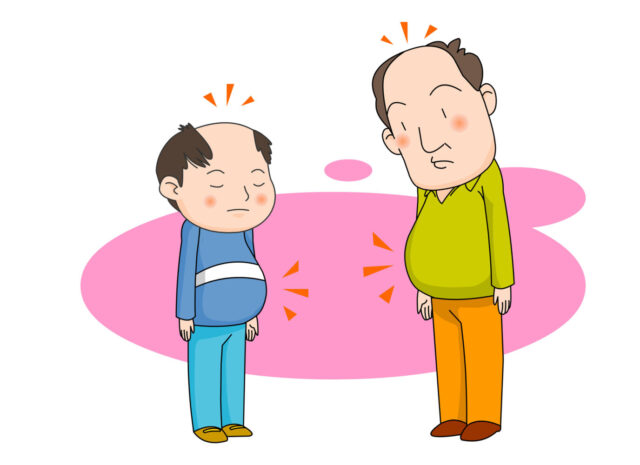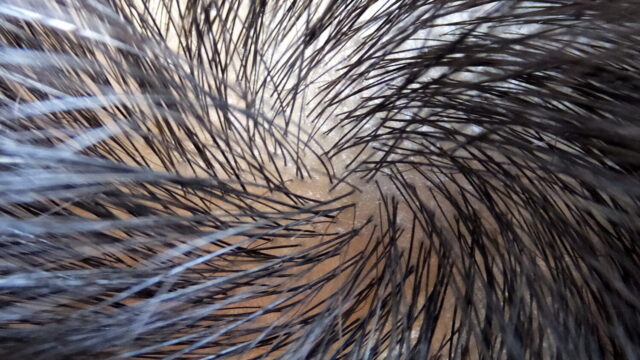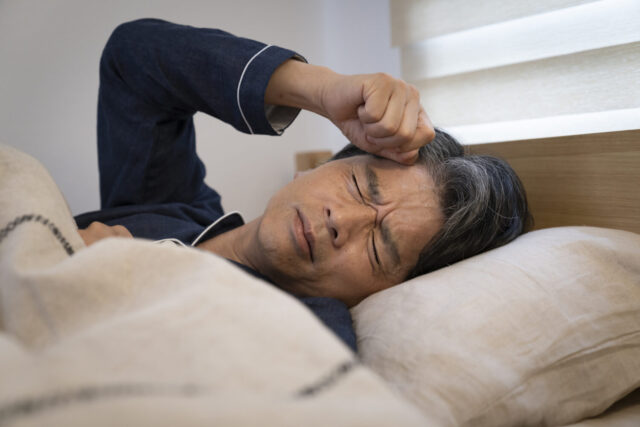
Many people suffer from thinning hair or young baldness and are concerned daily about the decreasing volume of their hair. However, there is a widespread misconception about the causes and countermeasures for thinning hair, and many patients who visit the Osaka AGA Kato Clinic are taking countermeasures for thinning hair based on incorrect information.
In particular, many people are anxious because they believe rumors and superstitions that have no scientific basis regarding the characteristics of people prone to thinning hair and baldness, the signs and symptoms of the onset of baldness.
This article provides accurate information on the characteristics, causes, symptoms, prevention, and treatment of people prone to thinning hair and young baldness. Relieve your worries and concerns about your hair with reference to finding the right prevention and treatment methods for you. With the right knowledge, you can face thinning hair and young baldness with confidence.
この記事で説明する内容は?

Kentaro Kato, Hospital director of Osaka AGA Kato Clinic group, specializing in comprehensive hair treatment. We specialize in cutting-edge treatments for a variety of clinically proven effective treatments for thinning hair and hair loss. Graduated from Faculty of Medicine, Kinki University in 2001 Worked at plastic surgery of Osaka Medical and Pharmaceutical University Hospital as an anesthesiologist from 2001 to 2005. Worked as a head of plastic surgery at major cosmetic surgery, Hair Transplant Department from 2005 to 2011. Opened Osaka AGA Kato Clinic in 2011. Japan Society of Plastic and Reconstructive Surgery, Regular Member. The Japanese Society for Regenerative Medicine, Regular Member. World Academy of Anti-Aging & Regenerative Medicine, Regular Member.
What are the 5 characteristics of People who are prone to Baldness?

Characteristics of people prone to baldness include;
- Genetic factors
- Hormone balance
- Scalp condition
- Lack of sleep
- Excessive drinking and smoking habits
These characteristics are related to the causes of hair loss and the progression of thinning hair, and it is important to take action as early as possible. Each of these characteristics is described below.
Genetic factors

Genetic factors are one of the major factors for people prone to baldness. Genes inherited from the mother’s or father’s side of the family have an impact, and male pattern baldness (AGA), for example, is known to have a large genetic involvement.
It is said that the probability of inheriting thinning hair from a person with thinning hair on the mother’s side is 80-90%, and it is necessary to take measures even before baldness occurs.
Hormone balance

Hormonal imbalance is another characteristic of people prone to balding. The male hormone testosterone is converted to dihydrotestosterone (DHT) when combined with the enzyme 5-alpha-reductase, which causes hair thinning.
DHT acts on hair follicles and shortens the hair growth cycle. Factors that can cause hormonal imbalance include stress, lack of sleep, and poor diet.
Scalp condition

Dry scalp and high dandruff are also characteristics of people prone to baldness. A dry scalp and high dandruff can worsen the scalp environment and adversely affect hair follicles and hair.
It is important to improve dry scalp and dandruff through proper hair care and shampoo selection.
Lack of sleep

Lack of sleep can contribute to thinning hair. Using smartphones and computers until late at night keeps the brain in an active state.
As a result, the secretion of growth hormones that should be secreted decreases, and the division of hair matrix cells is not activated.
Growth hormone secreted during sleep is necessary for hair production. Therefore, without sufficient sleep, thinning hair tends to progress more easily.
Excessive drinking and smoking habits

Smokers are at increased risk of hair loss compared to nonsmokers. Nicotine in cigarettes causes blood vessels to constrict. This constriction causes blood circulation to deteriorate and prevents the proper supply of nutrients needed for hair. As a result, this leads to hair loss and thinning.
Alcohol is also converted in the liver into the toxic substance acetaldehyde. Acetaldehyde consumes large amounts of amino acids, vitamins, and other nutrients necessary for hair growth. Therefore, it hinders hair growth.
What are the 4 Signs and Symptoms of Baldness?
Signs and symptoms of a person prone to baldness include;
- Receding hairline
- Noticeable thinning of hair around the whirlpool area
- Increased hair loss
- Scalp Changes
Each is explained in detail.
Receding hairline

One of the signs of a person’s susceptibility to baldness is a receding or thinning hairline. In particular, recession of the hairline on either side of the forehead, forming an M-shape, is common.
As this condition progresses, thinning hair begins to become more noticeable.
Noticeable thinning of hair around the whirlpool area

Noticeable thinning of hair around the whirlpool (top of the head) is another sign that a person is prone to baldness. The hair around the whirlpool may thin and gradually spread. Early countermeasures are important.
Increased hair loss
Increased hair loss is another sign of thinning hair. Usually, 50 to 100 hairs per day is considered the natural range of hair loss, but if you are losing more than that, you should be cautious.
If you are experiencing an increase in hair loss on your pillow or a large amount of hair falling out just by running your hand through your hair comb, it is likely that your hair is thinning.
Scalp Changes
Scalp Changes are another symptom of a person’s susceptibility to balding. Thinning hair may spread if the following problems occur on the scalp
- Scalp turns red
- Itchiness
- Increased dandruff
Measures are required to control the progression of thinning hair.
Recommended prevention and Countermeasures for People prone to baldness

If you see signs of baldness, it is important to take early measures to prevent the symptoms from worsening. The following are some of the measures you can take immediately to prevent thinning hair.
- Hair care and shampoo selection
- Scalp massage to promote blood circulation
- Stress Reduction
- Ensuring good quality sleep
- Well-balanced diet
- Moderate exercise
- Limiting tobacco and alcohol intake
Hair care and shampoo selection
Proper hair care and shampoo selection are effective in preventing thinning hair. Choose shampoos that are scalp-friendly, additive-free, and contain hair-growth ingredients.
Also, rinse and conditioner after shampooing should contain ingredients that are good for the scalp and hair.
Scalp massage to promote blood circulation
Scalp massage stimulates blood circulation and nourishment to the hair. Massaging the scalp with moderate force helps prevent thinning hair.
Stress Reduction
Stress is one of the causes of thinning hair. Reducing stress can slow the progression of thinning hair. Find relaxation methods and hobbies to release stress on a regular basis.
Ensuring good quality sleep
Good quality sleep, along with overall body recovery, produces “growth hormone” that promotes hair growth. 7-8 hours of sleep and a good sleeping environment will help prevent thinning hair.
Well-balanced diet
Well-balanced diet is also important in preventing thinning hair. In particular, be aware of nutrients necessary for hair growth, such as zinc, iron, and B vitamins.
Moderate exercise
Moderate exercise stimulates blood circulation and helps deliver nutrients to the hair. Stress reduction through exercise also helps prevent thinning hair.
Limiting tobacco and alcohol intake
Tobacco and alcohol can worsen blood circulation and accelerate the progression of thinning hair. Limiting intake will help prevent thinning hair.
Recommended treatment for Thinning hair and Young baldness?

Early measures are important for thinning hair and young baldness. If you notice signs and symptoms, try prevention and countermeasure methods. If you still do not feel any effects or if the symptoms have progressed, treatment at a specialized clinic is recommended.
Treatment at a clinic specializing in hair loss
If you are concerned about thinning hair, consider seeking treatment at a specialized clinic. A doctor with expertise in this field will be able to diagnose the problem and suggest appropriate and effective treatments.
Hair transplantation surgery
If thinning hair is progressing, hair transplant surgery can be considered. Hair transplant surgery is a treatment in which hair is harvested from the back or side of the head and transplanted to the area of thinning hair.
Because it uses the patient’s own hair, natural-looking results can be expected. However, the cost and risks of the surgery must also be taken into consideration.
Use of over-the-counter hair growth and hair regrowth products
Over-the-counter hair growth and hair regrowth products can also help treat thinning hair. However, their effectiveness varies from person to person, so it is important to find the right product for you.
It may take some time for the effects to appear, so use the product continuously over a long period of time. It is also important to check the ingredients and directions for use before using the product and to use it appropriately.
Conclusion
This article discussed the causes and signs of thinning hair and how to prevent and treat it. Genetics, hormonal balance, and stress can cause thinning hair.
Prevention methods include shampoo selection, scalp massage, and lifestyle modification.
If you do not feel any effect after trying prevention and countermeasure methods, treatment at a clinic specializing in thinning hair is recommended. First, consider consultation and treatment at a clinic to find a prevention and countermeasure method that is right for you.










